If you were to ask most people what defines how well they sleep, they’d probably say their mattress. While it’s true that the support offered by your mattress plays a huge role in how well you sleep, your blanket and your pillow are just as important.
It’s a perfect trio: Your mattress supports your spine and joints, your pillow supports your head and neck, and your blanket keeps you comfortable and secure throughout the night.
The right blanket might change by season or even by your mood. But that doesn’t mean you should leave it to chance. Here’s what you need to know about selecting the perfect blanket (or blankets) for your bed.
Does Your Blanket Really Matter?
In a word, yes. A blanket isn’t something that “gets the job done.” Any old blanket won’t do. A blanket is an investment, and you’re going to use it every night for the foreseeable future.
You spend almost a third of your life sleeping, so your blanket is just as important as the shoes you wear or the car you drive. In fact, you’ll likely use your blanket far longer than you’ll use your car on an average day.
So yes, choosing the right blanket can significantly impact the way you sleep. If your blanket isn’t as comfortable as it should be, you’re likely to have more difficulty falling asleep. You might wake up in the middle of the night feeling hot and stuffy or chilled and shivering.
What To Consider When Choosing a Blanket
No matter what kind of blanket you choose, there are four important factors to keep in mind.
The Weight of the Blanket
If it’s 96 degrees outside and you’re sleeping under a colossal fur-lined blanket, you’re not going to have a very good time. Save that blanket for a snowy night.
There will also be times when you want the perfect balance of weight and warmth. In spring and autumn, you’ll need a blanket that’s just heavy enough to keep you cozy, but not so heavy that it feels oppressive.
In the summer, you’ll want a lightweight blanket that won’t smother you. This is especially important if you live in an area with significant humidity and high summer temperatures.
It’s also important to consider whether you find heavier blankets to be soothing. A weighted blanket may help you sleep better — though it will be difficult to use during the warmer month. The Hug Sleep Pod is a great workaround.
The Way the Blanket Feels Against Your Skin
It doesn’t matter that a blanket is the perfect weight if it’s making you itchy. If you have sensitive skin, it’s important to choose a blanket made of a fabric that won’t irritate your skin. You’ll also need to launder it with a gentle detergent that won’t cause skin reactions.
Even if you don’t have sensitive skin, you should still be mindful of the material you use. Your blanket will make contact with your skin throughout the night, and you want that contact to be soothing, not abrasive or uncomfortable.
Synthetic fabrics like polyester and rayon are most likely to irritate your skin than more natural options like cotton and silk, which generally have softer textures that you’ll love to snuggle into.
How Breathable the Fabric Is
A blanket should keep you warm, but it shouldn’t make you feel sweaty or overheated in the middle of the night. Your body needs to be kept somewhat cool while you sleep, even during the wintertime. (The ideal temperature for sleep is between 60 and 70 degrees Fahrenheit.)
The Care Instructions
You need to wash your bedding once a week, since it absorbs body oils, dirt, debris, and more. Bedding gets dirty very quickly, and you absolutely must be able to launder it properly.
If you know that you won’t have the patience or time for intensive washing — or if you live in a condo or apartment that doesn’t have a washer/dryer unit — look for lower-maintenance bedding that doesn’t require special washing cycles or line drying.
1. Comforters
Comforters are blankets with a soft filling sewn into the inside. Less-expensive comforters usually have polyester sewn inside, while higher end-comforters will be filled with cotton, down (duck or goose feathers), or a down alternative (a synthetic or cotton filling made to mimic down).
Comforters are the most common type of blanket. They’re usually bundled with fitted sheets, flat sheets, and pillowcases in bagged bedding sets. Comforters are a medium-weight blanket, making them the perfect choice for seasons or climates where it’s not too hot and not too cold.
Comforters are usually the easiest type of blanket to launder, but it all depends on the type of material and filling they’re made of. Sustainable materials like bamboo fabrics are typically easy to wash.
2. Quilts
Quilts are like comforters, but they aren’t as fluffy. Quilts are designed to be thin and flat, which makes them easier to fold and store when they’re not in use. They’re a better option for people who don’t like bulky bedding.
While quilts are usually a medium-weight bedding option, it all depends on what they’re filled with and how dense the filling is. Many people use quilts as one layer of their winter bedding.
Laundering quilts can be difficult if they’re handmade quilts, since you’ll need to be very gentle with them. Handmade blankets are much more delicate than blankets made with industrial sewing machines.
3. Duvets
A duvet is a lot like a comforter, but it isn’t intended to be used alone. A duvet by itself is essentially just a blanket made of filler. It needs to go inside of something called a duvet cover, which is the surface that will ultimately touch your skin.
The duvet cover opens up and has ties on the inside to secure it. While it can be a little clumsy to get the duvet inside the cover, remember that you can often skip washing the duvet and just throw the cover in the laundry.
4. Coverlets
Coverlets are like an extra sheet. They sit between your normal bedsheet and the comforter, quilt, or duvet you use on top. Coverlets aren’t intended to be used as a standalone blanket, just to provide an additional layer of warmth for the cooler months.
5. Throw Blankets
Throw blankets are generally regarded as decorative, but they can and do serve a purpose in the right context. Throw blankets are thin blankets that are usually aesthetically appealing. People drape them over furniture or lay them at the foot of the bed to add color, texture, or patterns to a space.
They also serve as the perfect non-bed blanket. If you want to curl up on the couch to watch TV or snuggle into a comfy chair to read, your throw blanket is the perfect comfort companion for the occasion.
6. Weighted Blankets
Weighted blankets are blankets with heavy pellets sewn inside. These pellets are usually constructed of plastic or metal to make the blanket very heavy. Weighted blankets aren’t for everyone, but they serve a very important purpose for some.
For example, people who are neurodivergent (including people on the autism spectrum and people who live with anxiety) often find that deep pressure calms their nerves. The weight of the blanket feels soothing rather than oppressive.
Given their heavy fillings, weighted blankets can be more complicated to wash, so it’s important to follow the manufacturer’s care instructions closely.
7. Electric Blankets
Electric blankets are essentially giant heating pads. You plug your electric blanket into the wall, set a temperature and a timer, and crawl underneath. Because of the wiring inside, many electric blankets aren’t very comfortable — but they’ll definitely keep you warm.
Electric blankets, just like anything else electrical that produces heat, can be a fire hazard. Electric blankets are best reserved for occasions when it’s very cold outside and your central heating or furnace isn’t keeping your home warm enough.
8. Wearable Blankets
The term “wearable blanket” can be used to refer to any kind of blanket that can also act as a garment. Wearable blankets are generally oversized and designed to cover your entire body. They might even come equipped with a hood.
Wearable blankets aren’t intended to be used as a substitute for actual blankets. They may provide additional warmth on cold nights or help keep you cozy during occasions like holiday mornings.
What Is a Sleep Pod?
The Hug Sleep Pod is the perfect complement to many of the blanket options above. It provides some of the benefits of a weighted blanket, but without the heaviness and heat. In short, it’s something you never knew you needed — but once you have one, you’ll wonder how you ever slept without it.
The Sleep Pod is a soft, lightweight, breathable cocoon that you slide into before you go to sleep. When you lay down, the pod provides gentle four-way compression to your entire body.
This compression has a similar effect to the calming deep touch sensation that weighted blankets provide, but it’s far less cumbersome. It also helps provide something called Deep Touch Pressure Therapy, or DTPT, which helps to release the hormones that usher your body towards sleep.
Since the Sleep Pod doesn’t replace your blanket, it can be used year-round. Just pair it up with your favorite blanket for the season, snuggle in, and doze off.
Sources:
Fabrics for Atopic Dermatitis | PubMed
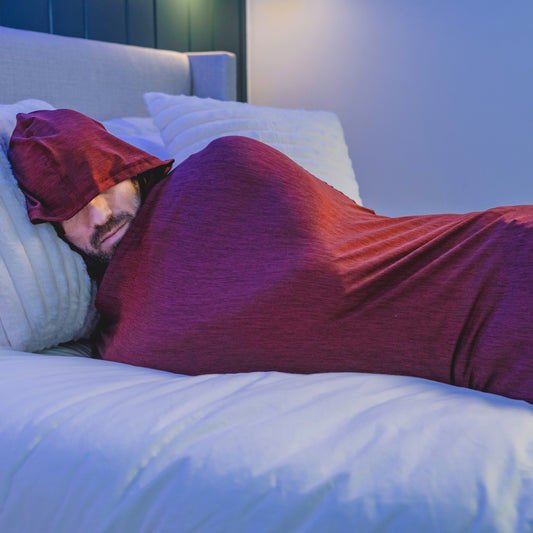

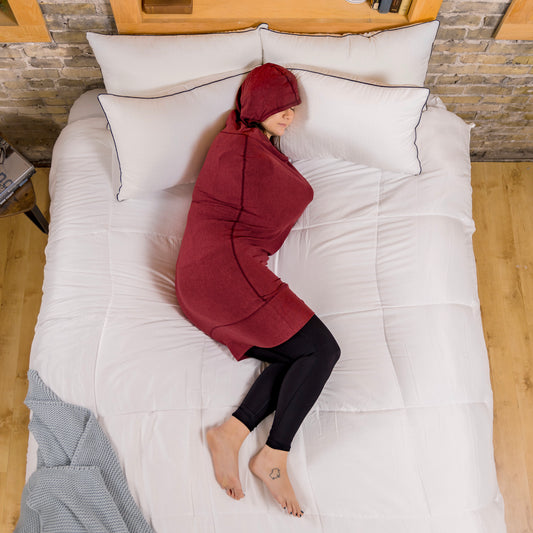
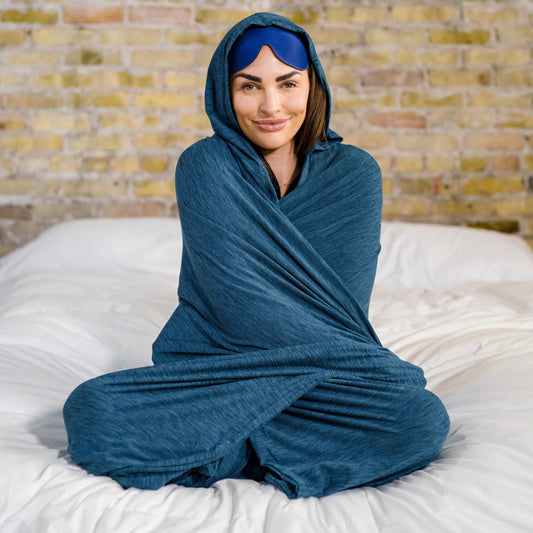

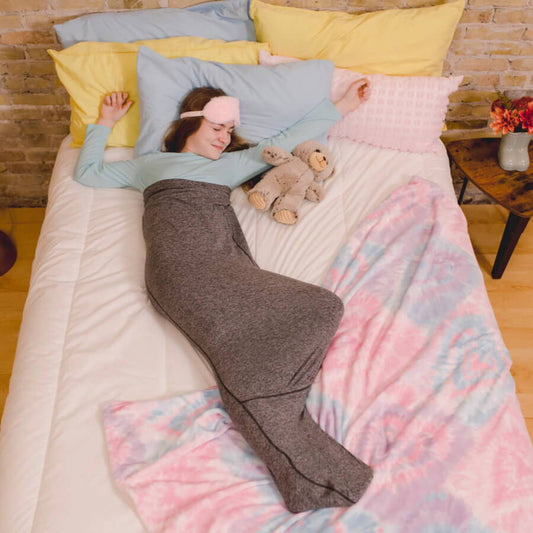

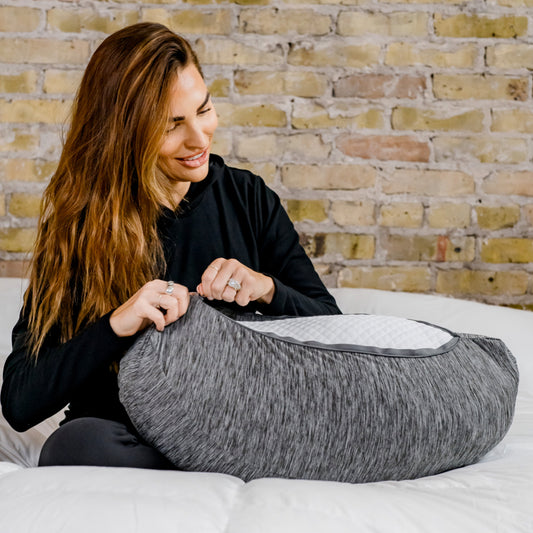
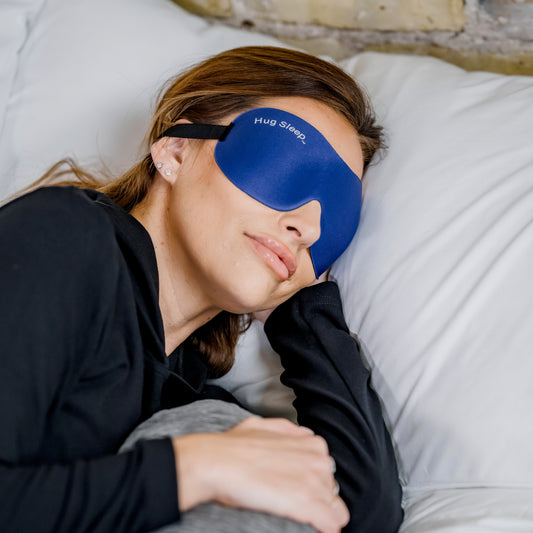
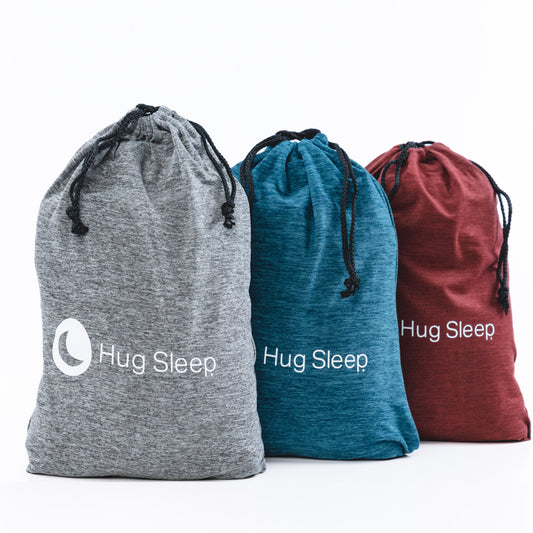
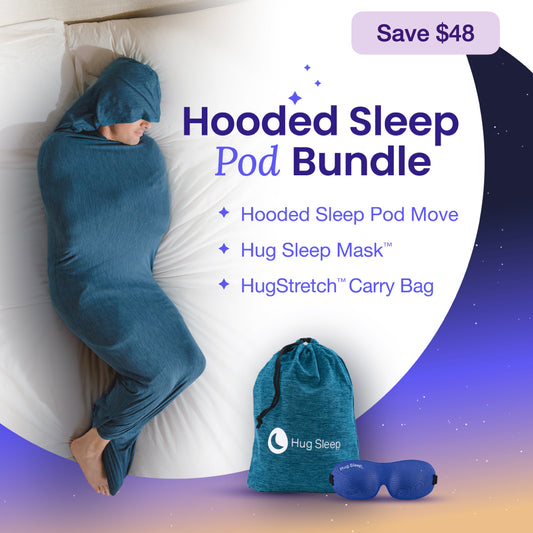
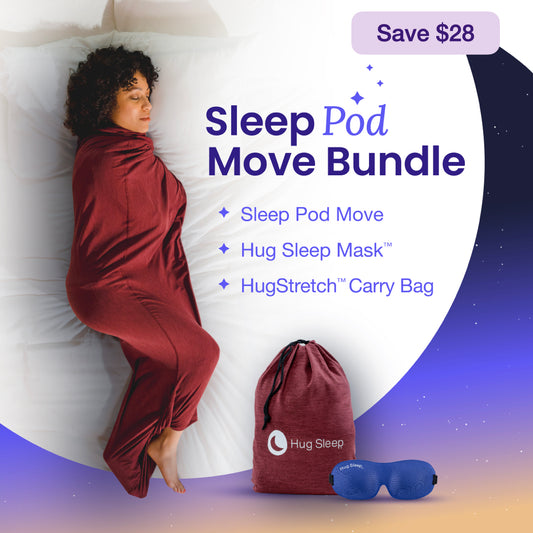
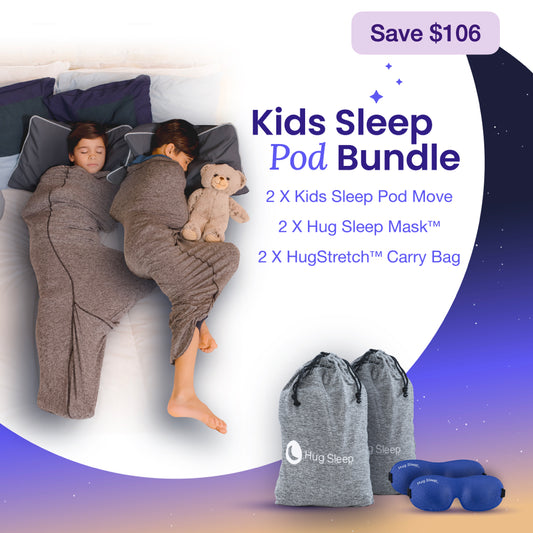
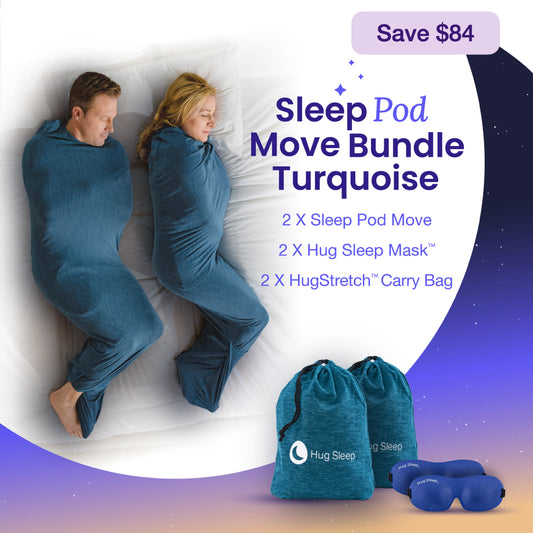
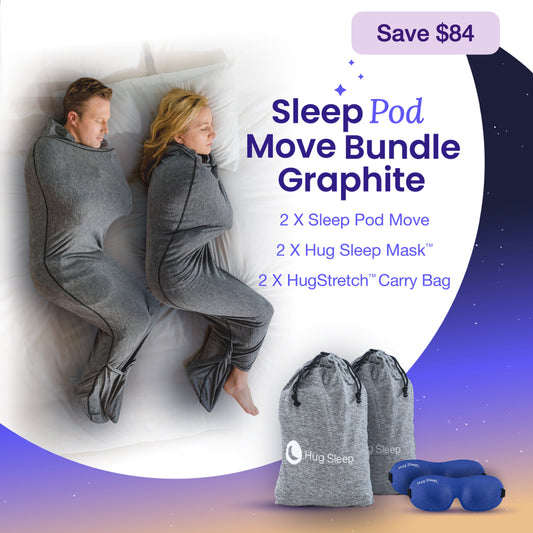
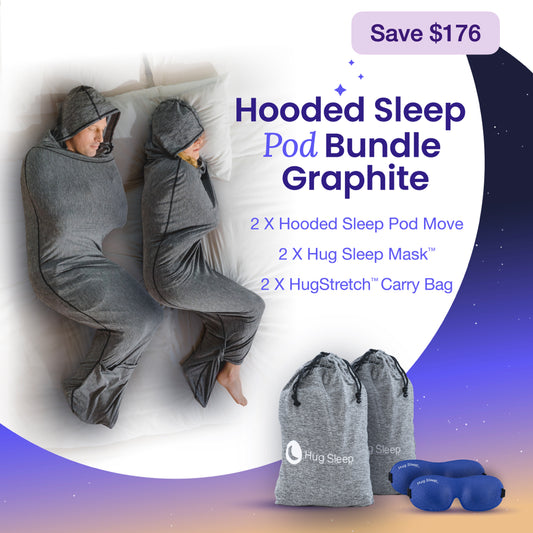
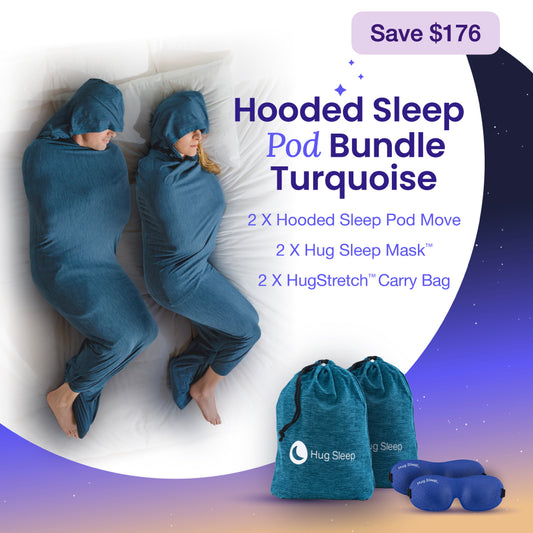
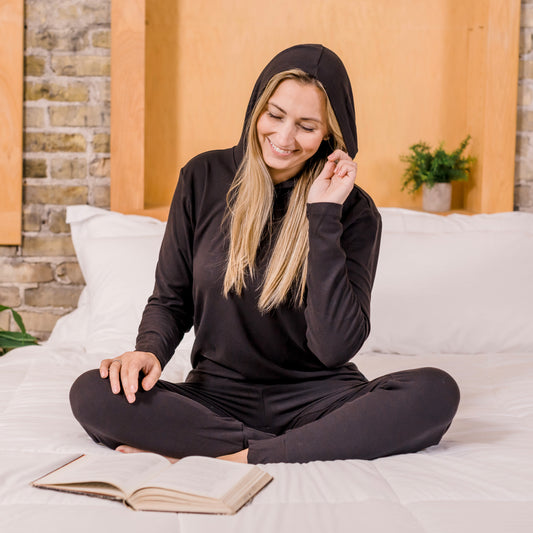
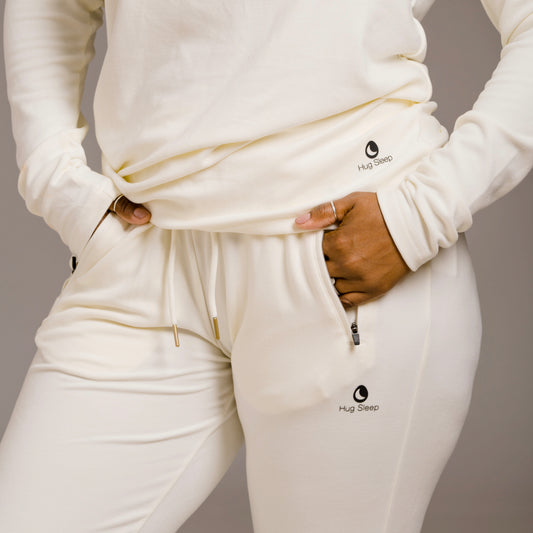
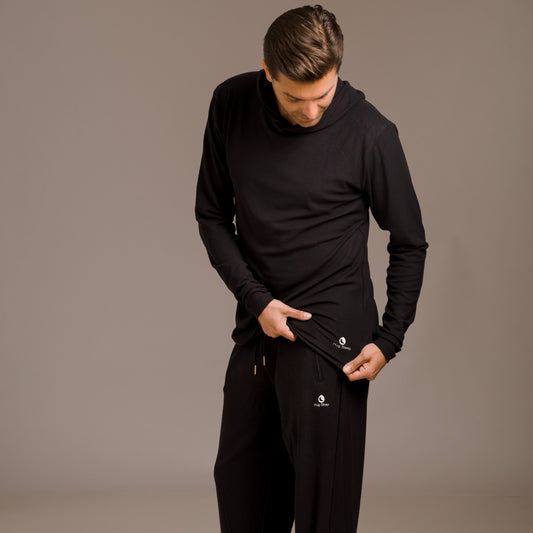
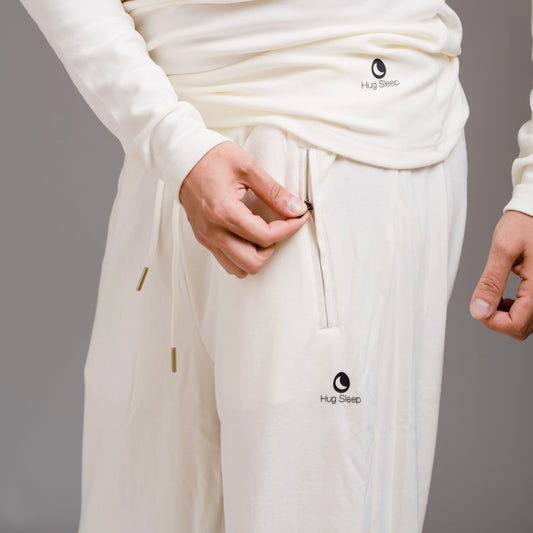













400,000+ happy customers